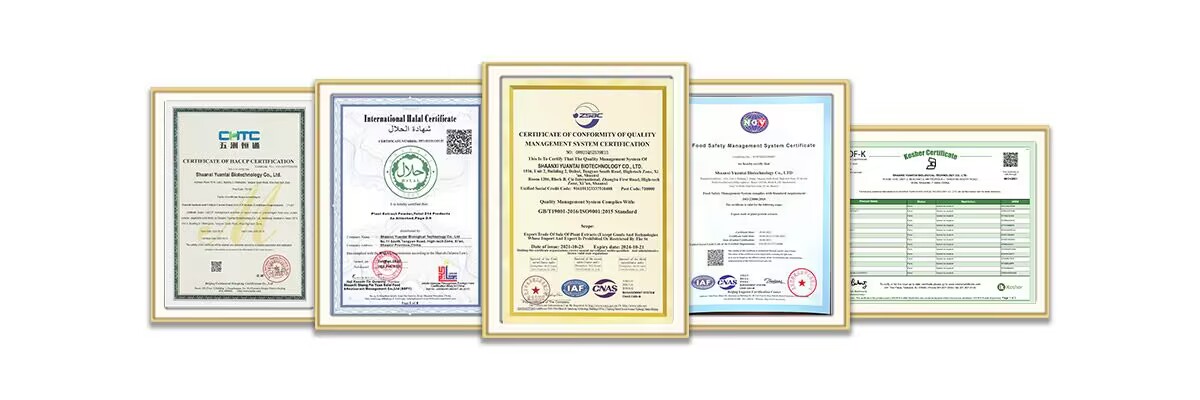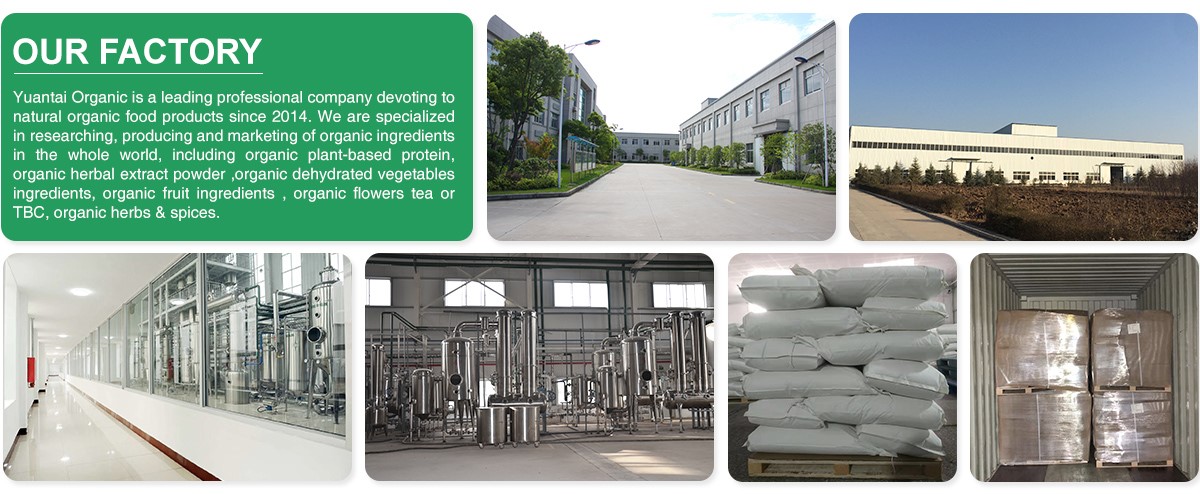Acetohydroxamic acid Powder
EINECS:208-913-8
Molecular formula:C2H5NO2
Molecular weight:75.0666
Properties:white paper light yellow solid
Melting point:90ºC
Boiling point:271ºC
Specifications:98%
Certification:EU&NOP organic certificate,ISO9001,ISO22000,Kosher,Halal,HACCP
Delivery speed:1-3 days
Inventory:In stock
Payment method:T/T,VISA,XTransfer,Alipay...
Transportation:DHL.FedEx,TNT,EMS,SF,sea,air
- Fast Delievery
- Quality Assurance
- 24/7 Customer Service
Product Introduction
What is acetohydroxamic acid powder?
Acetohydroxamic acid powder is white crystal or crystalline powder, also known as acetohydroxyamine, almost odorless; slightly bitter; discoloration when exposed to light; easy to absorb moisture; this product is easily soluble in water and anhydrous ethanol; the aqueous solution has an acid-adjusting reaction. In the feed industry, it is used as a rumen microbial urease inhibitor and a feed additive for ruminants. In addition, it is a competitive urease inhibitor in medicine, and its trade name is Junshitong. In the metallurgical industry, it is used as a chelating agent and extractant for the extraction and identification of metal ions.

Application
It is widely used in medicine, animal husbandry, agriculture, environmental protection, metallurgy, etc.
Used in the feed industry
As a rumen microbial urease inhibitor, it is used as a feed additive for ruminants. Due to its good rumen microbial urease inhibition, it was initially used in the nutrition of ruminants such as cattle and sheep in the 1990s in the United Kingdom and the United States to improve the rumen ammonia environment, increase protein conversion rate, increase roughage intake, reduce blood ammonia concentration, reduce ammonia stress, and increase body immunity, with good results.
Application in dairy cow production
Research shows that 80% of the bacteria in the rumen of dairy cows can use NH as the only nitrogen source. Therefore, ensuring the optimal rumen NH concentration is a prerequisite for obtaining the maximum microbial protein synthesis. As the crude protein content in the dairy cow's diet increases, the concentration of NH in the rumen also increases accordingly. At this time, adding NH can reduce the excretion of urinary nitrogen and improve the utilization rate of crude protein. Therefore, the higher the crude protein content in the diet, the greater the dosage must be, so that the effect of using it will be better.
When developing a special premix for dairy cows with acetohydroxamic acid as the core, it is also necessary to consider the addition of minerals and vitamins. The traditional view is that only fat-soluble vitamins need to be supplemented for rumen microorganisms, but recent data indicate that some rumen microorganisms require specific B vitamins to regulate growth. When using this urease inhibitor in urea feed, vitamin balance should be considered. Mineral elements are necessary for microbial growth, and some trace elements are regulators of bacterial metabolism. Reasonable matching of mineral elements can improve the feeding effect of premixes with them as the core. Others such as the composition of dairy cow diets, feeding methods and frequency, production level and physiological state of dairy cows, and the type and dosage of acetohydroxamic acid can also affect the effect of this urease inhibitor.
Functions in the process of dairy cow feeding

1. It can save protein feed and reduce feed costs
First, adding urea can replace part of the expensive cake protein feed, which saves protein feed and reduces feed costs: even if the diet does not contain urea, the use of this product can also increase microbial protein synthesis and save protein feed.
2. It can increase dairy milk production
It can not only improve the utilization rate of urea and feed and reduce costs, but also avoid ammonia poisoning or ammonia stress, so that dairy cows can maintain physiological balance and grow healthily, thereby increasing dairy milk production.
In short, it can inhibit the activity of urease in the rumen and slow down the decomposition rate of urea in the rumen, so that the release rate of NH3 is synchronized and matched with energy and other nutrients in terms of quantity, proportion and release rate, improve the utilization rate of ammonia by ruminants, improve the utilization method of urea, increase the synthesis of bacterial protein, and under the guidance of the basic idea of overall nutritional regulation, ultimately achieve the effect of saving protein and reducing feeding costs.
3. Avoid ammonia poisoning or ammonia stress
Urea poisoning is a common phenomenon in cattle and sheep when feeding urea-containing diets. Urea itself is non-toxic, but the NH3 and CO2 it decomposes will quickly enter the blood and accumulate rapidly. If it exceeds a certain limit, it will cause ammonia poisoning. Usually, when the blood ammonia concentration reaches 1-4mg/100ml, cattle can be poisoned; when the blood ammonia concentration reaches 10-29mg/100m1, cattle can die. Ruminant rumen microorganisms can produce urease, which has a very high activity and is relatively stable. It plays an important role in the decomposition of rumen NPN and can quickly catalyze the hydrolysis of urea. It is reported that the rate at which urea decomposes to produce ammonia is 4 times the rate at which rumen microorganisms utilize ammonia. Therefore, it is neither safe nor convenient to use urea alone or directly. Adding urea and urease inhibitors can not only improve the utilization rate of ammonia, but also greatly reduce the risk of ammonia poisoning. ,In addition, when feeding urea feed, it is also necessary to pay attention to feeding less or prohibiting feed with high urease activity such as soybeans, bean cakes, pumpkins, red clover, flowering alfalfa, etc., otherwise it will increase the risk of urea poisoning, but if urease inhibitors are used at this time, ammonia poisoning or ammonia stress can be effectively prevented.
4. Improve the livestock house environment
Ammonia is a recognized stressor and one of the most harmful gases in animal pens. Ammonia can induce the occurrence of a variety of respiratory diseases in poultry, pigs and experimental animals. Monogastric animals are raised in a high-concentration ammonia environment, and respiratory mycoplasma, virus, and bacterial secondary infections are aggravated. Chickens are particularly sensitive to ammonia. Under the long-term action of 5mg/kg ammonia, the health of chickens will be affected. Urease inhibitors act on the active center of urease in the intestine to inactivate it, and continue to work with the excrement, which can reduce the ammonia concentration in livestock and poultry pens. A large number of experiments have shown that there is no residue and no toxic side effects on dairy cows, beef cattle, and mutton sheep, and it can eliminate the odor of livestock feces and control the environmental pollution caused by large-scale breeding.
In addition, spraying urease inhibitors directly into livestock and poultry manure can also achieve the purpose of controlling environmental ammonia pollution.
5. Prevention and treatment of broiler ascites
The occurrence of broiler ascites is closely related to intestinal ammonia. Adding urease inhibitors to feed can reduce urease activity and ammonia content in the small and large intestines of broilers. The reduction in ammonia concentration can reduce the renewal rate of intestinal mucosa and the oxygen consumption of portal vein return organs. The reduction in oxygen consumption of these tissues can provide additional oxygen to cope with the stress caused by ascites and reduce mortality.
In medicine, it is a competitive inhibitor of urease. The trade name is Junshitong, which has the function of preventing and inhibiting the formation of alkaline urinary stones and antibacterial effects. It is used for the treatment and prevention of infectious urinary stones and urinary tract infections.
In the metallurgical industry, it is used as a chelating agent, extractant, etc., for the extraction and identification of metal ions.
In the chemical industry, it is used as an organic synthesis intermediate for medicines, pesticides, etc.
In the pharmaceutical field:
It is mainly used to treat urinary stones and urinary tract infections. Its mechanism of action is to chelate with the nickel atom of urease to inactivate urease, thereby preventing urea from being decomposed, restoring the normal pH of urine, improving the physiological environment of supersaturated magnesium ammonium phosphate and carbonate-containing apatite, preventing the formation of stones and inhibiting their growth. In addition, it has certain antibacterial activity and can be used to prevent and treat diseases such as urinary catheter stones and urinary stones.
Agricultural field
As a competitive inhibitor of urease, it can slow down the rate of urea or protein decomposition into ammonia, thereby improving the utilization rate of protein. This is particularly important for ruminant feed additives because it can specifically slow down the rate of urea decomposition, increase the amount of microbial protein synthesis, and thus improve the production level of ruminants.
Metallurgical industry
It also shows its unique application value in the metallurgical industry. As a good organic ligand, it can be used for the extraction and analysis and identification of metal mineral components.
Certificates
YTBIO is developing in an all-round way. We have our own factory, quality inspection and R&D team. We are committed to providing customers with the best quality acetohydroxamic acid powder and services. It is our original intention to let every consumer enjoy high-quality and healthy products. If you have any needs or questions about our products, please feel free to contact us and we will reply you as soon as possible.

Packaging and Shipping


Our Company and Factory

_1737093401309.png)

